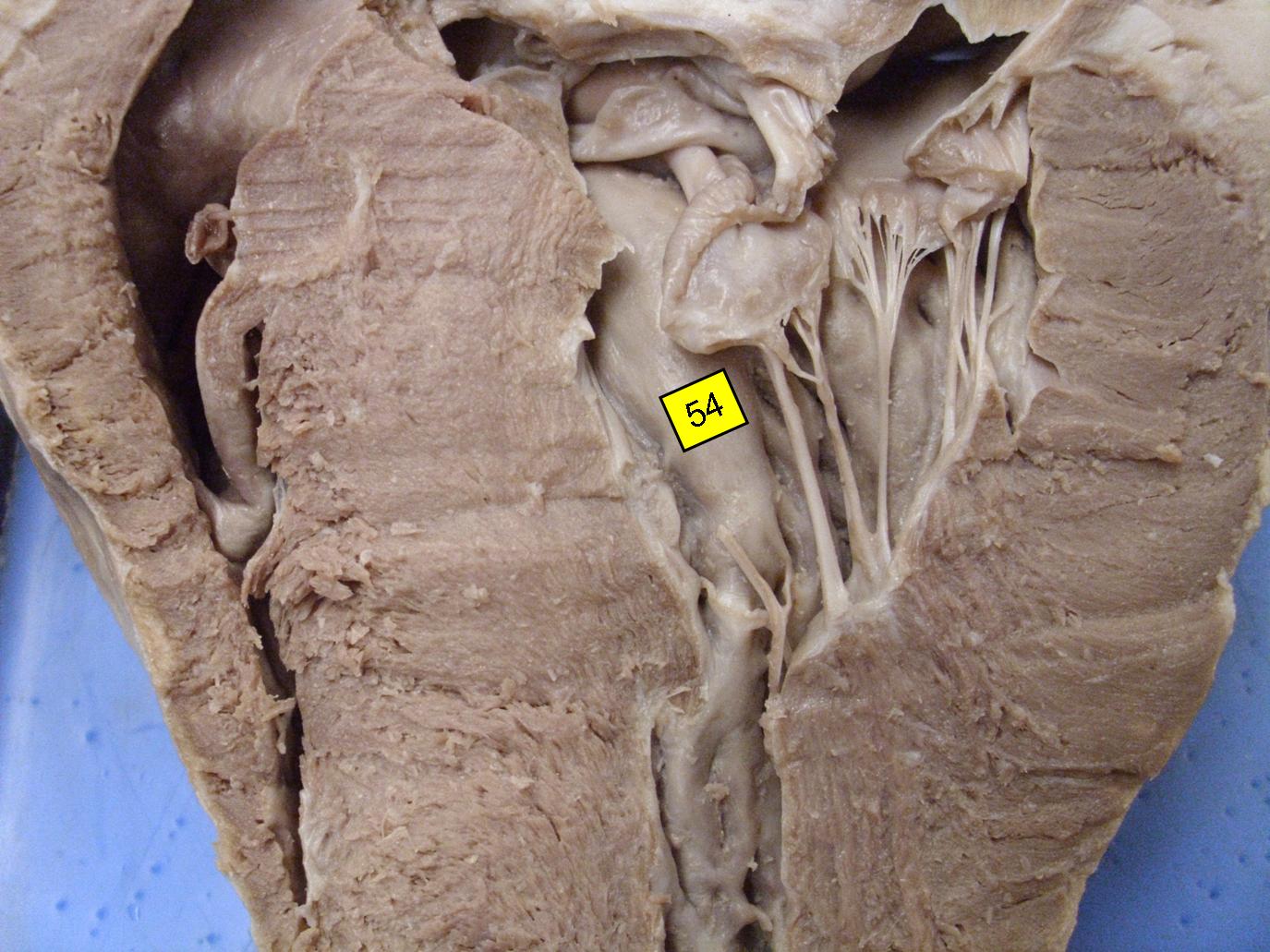Heart Model & Sheep Heart Practice Quiz (Modified)

This practice quiz covers information related to the sheep heart & the heart model. It is intended for use as a supplemental study aid. Please note that, as is the case on the lab practical, spelling counts! *Also, UNLIKE the practical, you can't revisit past questions!*
- 1.
1. Name the structure- be specific.
Explanation
The right auricle is a specific structure in the human body. It is a small, conical pouch located on the right side of the heart. Its main function is to collect deoxygenated blood from the body and direct it into the right atrium of the heart. The auricle has a wrinkled appearance, which allows it to expand and contract as blood flows in and out. This helps to regulate blood flow and ensure efficient circulation throughout the body.Rate this question:
- 2.
2. Name the vessel- be specific.
Explanation
The vessel being referred to in this question is the Superior Vena Cava. The Superior Vena Cava is a large vein that carries deoxygenated blood from the upper body back to the heart. It is located in the chest and is responsible for returning blood from the head, neck, arms, and upper chest to the right atrium of the heart.Rate this question:
- 3.
3. Name the structure-be specific.
- 4.
4. Name the vessels.
Explanation
The vessels referred to in the question are the pulmonary veins. These veins are responsible for carrying oxygenated blood from the lungs back to the heart. They play a crucial role in the circulatory system, ensuring that oxygenated blood is distributed to the rest of the body.Rate this question:
- 5.
5. Do the vessels in #4 carry blood to or from the heart?
- A.
To the heart
- B.
From the heart
Correct Answer
A. To the heartExplanation
The vessels in #4 carry blood to the heart.Rate this question:
-
- 6.
8. Name the vessel- be specific.
Correct Answer
Inferior Vena CavaExplanation
The vessel being referred to in this question is the Inferior Vena Cava. The Inferior Vena Cava is a large vein that carries deoxygenated blood from the lower body back to the heart. It is located on the right side of the body and runs parallel to the spine.Rate this question:
- 7.
9. Name the blood vessel (vein).
Correct Answer
Great Cardiac VeinExplanation
The correct answer is Great Cardiac Vein. The Great Cardiac Vein is a vein that runs alongside the left anterior descending artery in the heart. It collects deoxygenated blood from the myocardium and drains it into the coronary sinus, which then empties into the right atrium.Rate this question:
- 8.
10. Name the vessel (artery).
Correct Answer
Left Coronary ArteryExplanation
The correct answer is Left Coronary Artery. The left coronary artery is a blood vessel that arises from the aorta and supplies oxygenated blood to the left side of the heart muscle. It branches into two main arteries, the left anterior descending artery and the circumflex artery, which further divide into smaller branches to provide blood to different regions of the heart. The left coronary artery plays a crucial role in delivering oxygen and nutrients to the heart muscle, ensuring its proper functioning.Rate this question:
- 9.
11. Name the structure (NOT the vessels!)
Correct Answer
Interventricular SeptumExplanation
The correct answer for this question is the Interventricular Septum. The Interventricular Septum is a structure in the heart that separates the left and right ventricles. It is responsible for preventing the mixing of oxygenated and deoxygenated blood and ensuring that blood flows in the correct direction through the heart.Rate this question:
- 10.
12. Name the vessel.
Correct Answer
AortaExplanation
The correct answer is Aorta. The aorta is the largest artery in the body that carries oxygenated blood from the heart to the rest of the body. It originates from the left ventricle of the heart and branches out into smaller arteries to supply blood to different organs and tissues.Rate this question:
- 11.
13. From what chamber does #12 receive blood? (Reworded: #12 receives blood from what chamber?)
Correct Answer
Left Ventricle, The Left VentricleExplanation
The correct answer is "Left Ventricle, The Left Ventricle." The left ventricle is a chamber of the heart that receives oxygenated blood from the left atrium and pumps it out to the rest of the body. The rephrased question asks from which chamber #12 receives blood, and the answer is the left ventricle.Rate this question:
- 12.
15. Name the chamber where #14 is located.
Correct Answer
Right VentricleExplanation
The chamber where #14 is located is the right ventricle.Rate this question:
- 13.
16. Name the valve.
Correct Answer
Tricuspid ValveExplanation
The given correct answer is "Tricuspid Valve". The tricuspid valve is one of the four valves in the human heart. It is located between the right atrium and the right ventricle. It consists of three leaflets or cusps that open and close to regulate the flow of blood from the atrium to the ventricle and prevent backflow. The tricuspid valve plays a crucial role in ensuring the proper circulation of oxygenated and deoxygenated blood in the heart.Rate this question:
- 14.
17. Is the blood that flows through #16 oxygenated or deoxygenated?
Correct Answer
deoxygenatedExplanation
The blood that flows through #16 is deoxygenated. This means that it has a low level of oxygen and a high level of carbon dioxide. Deoxygenated blood is typically found in veins and is returning to the heart to be pumped to the lungs, where it will pick up oxygen and release carbon dioxide.Rate this question:
- 15.
18. Name the structures (NOT the valve!)
Correct Answer
Chordae TendineaeExplanation
Chordae Tendineae are fibrous cords that connect the papillary muscles to the cusps of the atrioventricular valves in the heart. They prevent the valves from inverting or prolapsing during ventricular contraction, ensuring the proper flow of blood through the heart.Rate this question:
- 16.
19. Name the valve.
Correct Answer
Pulmonary Semilunar ValveExplanation
The correct answer is "Pulmonary Semilunar Valve." The pulmonary semilunar valve is a valve located between the right ventricle and the pulmonary artery. It prevents the backflow of blood from the pulmonary artery into the right ventricle, ensuring that blood flows in one direction, from the heart to the lungs. This valve opens when the right ventricle contracts, allowing blood to be pumped into the pulmonary artery, and closes when the ventricle relaxes, preventing blood from flowing back into the heart.Rate this question:
- 17.
20. Name the structures.
Correct Answer
Trabeculae CarneaeExplanation
Trabeculae Carneae are muscular ridges or columns that are found on the inner surface of the ventricles of the heart. These structures help to prevent the walls of the ventricles from sticking together during contraction and relaxation of the heart. They also provide support and help to distribute the force of the contraction evenly across the ventricular walls. Trabeculae Carneae are important for maintaining the structural integrity and efficient functioning of the heart.Rate this question:
- 18.
21. Name the vessels.
Correct Answer
Pulmonary ArteriesExplanation
The vessels mentioned in the question are the Pulmonary Arteries. These are blood vessels that carry deoxygenated blood from the heart to the lungs. The deoxygenated blood is then oxygenated in the lungs and returned to the heart through the Pulmonary Veins.Rate this question:
- 19.
22. Name the valve.
Correct Answer
Aortic Semilunar ValveExplanation
The correct answer is Aortic Semilunar Valve. This valve is located between the left ventricle and the aorta in the heart. It prevents the backflow of blood from the aorta into the left ventricle when the heart is at rest. When the left ventricle contracts, the valve opens to allow blood to be pumped into the aorta, and when the ventricle relaxes, the valve closes to prevent blood from flowing back into the ventricle.Rate this question:
- 20.
23. Name the layer of cardiac tissue.
Correct Answer
EndocardiumExplanation
The correct answer is Endocardium. The endocardium is the innermost layer of the heart tissue. It lines the chambers of the heart and covers the valves. It is made up of endothelial cells and connective tissue. The endocardium helps to reduce friction as blood flows through the heart and also plays a role in regulating the contraction and relaxation of the cardiac muscle.Rate this question:
- 21.
24. What is the most superior region of the heart? (Hint: This is the site where most major blood vessels enter/exit the heart.)
- A.
Base
- B.
Apex
Correct Answer
A. BaseExplanation
The base of the heart is the correct answer because it is the superior region where most major blood vessels enter and exit the heart. The base of the heart is located at the top, opposite to the apex, and it is where the great vessels such as the aorta, pulmonary trunk, superior vena cava, and pulmonary veins are connected to the heart.Rate this question:
-
- 22.
26. Name the layer of cardiac tissue.
Correct Answer
MyocardiumExplanation
The correct answer is myocardium. The myocardium is the middle layer of the heart wall and is composed of cardiac muscle tissue. It is responsible for the contraction of the heart, allowing it to pump blood throughout the body. The myocardium is thicker in the left ventricle, as it needs to generate more force to pump blood to the rest of the body.Rate this question:
- 23.
27. Name the vessel.
Correct Answer
Pulmonary TrunkExplanation
The correct answer is "Pulmonary Trunk." The pulmonary trunk is a large blood vessel that arises from the right ventricle of the heart and carries deoxygenated blood to the lungs for oxygenation. It then returns oxygenated blood to the heart through the pulmonary veins.Rate this question:
- 24.
29. Name the region of the heart.
Correct Answer
Apex, apex of heartExplanation
The region of the heart that is being referred to in this question is the apex. The apex of the heart is the pointed, bottom portion of the heart. It is located at the lower left side of the heart and is formed by the left ventricle. The apex is an important anatomical landmark and is often used to determine the location of the heart when listening to heart sounds or performing procedures such as cardiac catheterization.Rate this question:
- 25.
30. Name the layer of cardiac tissue.
Correct Answer
EpicardiumExplanation
The epicardium is the outermost layer of the heart tissue. It is a thin, protective layer that covers the surface of the heart and is composed of connective tissue and epithelial cells. The epicardium helps to reduce friction between the heart and surrounding structures, and also contains blood vessels and nerves that supply the heart.Rate this question:
- 26.
31. Name the chamber.
Correct Answer
Right AtriumExplanation
The correct answer is Right Atrium. The right atrium is one of the four chambers of the heart. It is located on the right side of the heart and receives deoxygenated blood from the body through the superior and inferior vena cava. From the right atrium, the blood is then pumped into the right ventricle and eventually to the lungs for oxygenation.Rate this question:
- 27.
32. Is this the anterior side or posterior side of the heart?
- A.
Anterior side
- B.
Posterior side
Correct Answer
A. Anterior sideExplanation
The correct answer is "anterior side." The anterior side of the heart refers to the front or forward-facing surface of the heart. It is the side that is visible when looking at the heart from the front of the body. This side is primarily composed of the right ventricle and the right atrium, and it is responsible for pumping oxygen-depleted blood to the lungs for oxygenation.Rate this question:
-
- 28.
33. Name the structure.
Correct Answer
Left AuricleExplanation
The structure being referred to in this question is the Left Auricle. The auricles are small, conical structures located on the superior surface of each atrium of the heart. The left auricle specifically is found on the left atrium. Its function is to increase the capacity of the atrium, allowing it to hold a larger volume of blood. This helps to improve the efficiency of the heart's pumping action.Rate this question:
- 29.
34. Name the vessel that the probe passes through.
Correct Answer
Pulmonary TrunkExplanation
The vessel that the probe passes through is the pulmonary trunk. The pulmonary trunk is a large artery that carries deoxygenated blood from the right ventricle of the heart to the lungs for oxygenation.Rate this question:
- 30.
36. Name the structures.
Correct Answer
Trabeculae CarneaeExplanation
Trabeculae carneae are structures found in the ventricles of the heart. They are muscular ridges that line the inner surface of the ventricles. These ridges help to prevent the ventricles from collapsing when they contract, providing structural support and maintaining the shape of the heart. They also aid in the contraction of the ventricles by helping to distribute the force of the contraction evenly across the ventricular walls. Trabeculae carneae play an important role in maintaining the efficient pumping function of the heart.Rate this question:
- 31.
37. Name the structures.
Correct Answer
Papillary Muscles, Papillary MuscleExplanation
The correct answer is "Papillary Muscles, Papillary Muscle." The question is asking for the name of the structures, and the answer provides the correct names, which are "Papillary Muscles" and "Papillary Muscle."Rate this question:
- 32.
40. Name the specific structure.
Correct Answer
Right AuricleExplanation
The right auricle is a specific structure in the human body. It is a pouch-like structure located on the right side of the heart. The auricle helps to increase the capacity of the atrium, allowing it to hold more blood. It also aids in the regulation of blood flow by directing blood into the atrium.Rate this question:
- 33.
41. What chamber lies beneath #40?
Correct Answer
Right AtriumExplanation
The right atrium is the chamber that lies beneath #40. The right atrium is one of the four chambers of the heart and it receives deoxygenated blood from the body through the superior and inferior vena cava. It then pumps this blood into the right ventricle, which will eventually pump it to the lungs for oxygenation.Rate this question:
- 34.
42. Is this the anterior side or posterior side of the heart?
- A.
Anterior side
- B.
Posterior side
Correct Answer
B. Posterior sideExplanation
The correct answer is posterior side. The heart has two main sides - anterior and posterior. The posterior side refers to the back side of the heart, while the anterior side refers to the front side. In this question, the correct answer is "posterior side", indicating that the image or description being referred to is showing the back side of the heart.Rate this question:
-
- 35.
43. Name the layer of cardiac tissue.
Correct Answer
EpicardiumExplanation
The epicardium is the outermost layer of the heart tissue. It is a protective layer that covers the heart and helps to reduce friction as the heart beats. The epicardium is made up of connective tissue and contains blood vessels, nerves, and fat. It also plays a role in supplying oxygen and nutrients to the heart muscle.Rate this question:
- 36.
46. Name the vessel that the probe passes through.
Correct Answer
AortaExplanation
The probe passes through the aorta. The aorta is the largest artery in the body and carries oxygenated blood from the heart to the rest of the body. It is located in the chest and abdomen and is responsible for distributing blood to all the organs and tissues. Passing through the aorta allows the probe to access the blood flow and gather information about the cardiovascular system.Rate this question:
- 37.
49. Name the structure.
Correct Answer
Interventricular SeptumExplanation
The correct answer is "Interventricular Septum." The interventricular septum is a structure in the heart that separates the left and right ventricles. It is a muscular wall that prevents the mixing of oxygenated and deoxygenated blood, ensuring that oxygen-rich blood is pumped to the body while deoxygenated blood is pumped to the lungs for oxygenation.Rate this question:
- 38.
50. Name the layer of cardiac tissue.
Correct Answer
MyocardiumExplanation
The correct answer is Myocardium. The myocardium is the middle layer of the heart wall and is composed of cardiac muscle tissue. It is responsible for the contraction of the heart, allowing it to pump blood throughout the body. The myocardium is thicker in the left ventricle compared to the other chambers of the heart, as it needs to generate more force to pump blood to the rest of the body.Rate this question:
- 39.
51. Name the region of the heart.
Correct Answer
Apex, Apex of heart, Apex of the heartExplanation
The region of the heart that is being referred to in this question is called the apex. The apex is the lower pointed end of the heart, located at the bottom of the heart and pointing towards the left side of the body. It is formed by the tip of the left ventricle. The term "Apex of heart" or "Apex of the heart" can also be used to describe this region.Rate this question:
- 40.
54. Name the layer of cardiac tissue.
Correct Answer
EndocardiumExplanation
The endocardium is the correct answer for this question. It is the innermost layer of the heart, composed of a thin layer of endothelial cells. It lines the chambers of the heart and covers the heart valves. The endocardium helps to prevent blood clotting and provides a smooth surface for blood flow within the heart.Rate this question:
Quiz Review Timeline +
Our quizzes are rigorously reviewed, monitored and continuously updated by our expert board to maintain accuracy, relevance, and timeliness.
-
Current Version
-
Mar 20, 2023Quiz Edited by
ProProfs Editorial Team -
Jan 29, 2018Quiz Created by
Mike
- Aura Quizzes
- Axial Skeleton Quizzes
- Body Mechanics Quizzes
- Body Parts Quizzes
- Body System Quizzes
- Chest Quizzes
- Ear Quizzes
- Endocrine Quizzes
- Eye Quizzes
- Feet Quizzes
- Gland Quizzes
- Limb Quizzes
- Musculoskeletal Quizzes
- Pain Quizzes
- Pharmacodynamics Quizzes
- Piercing Quizzes
- Spanish Body Parts Quizzes
- Thorax Quizzes
- Urine Quizzes
 Back to top
Back to top



.jpg)
.jpg)
.jpg)
.jpg)
.jpg)
.jpg)
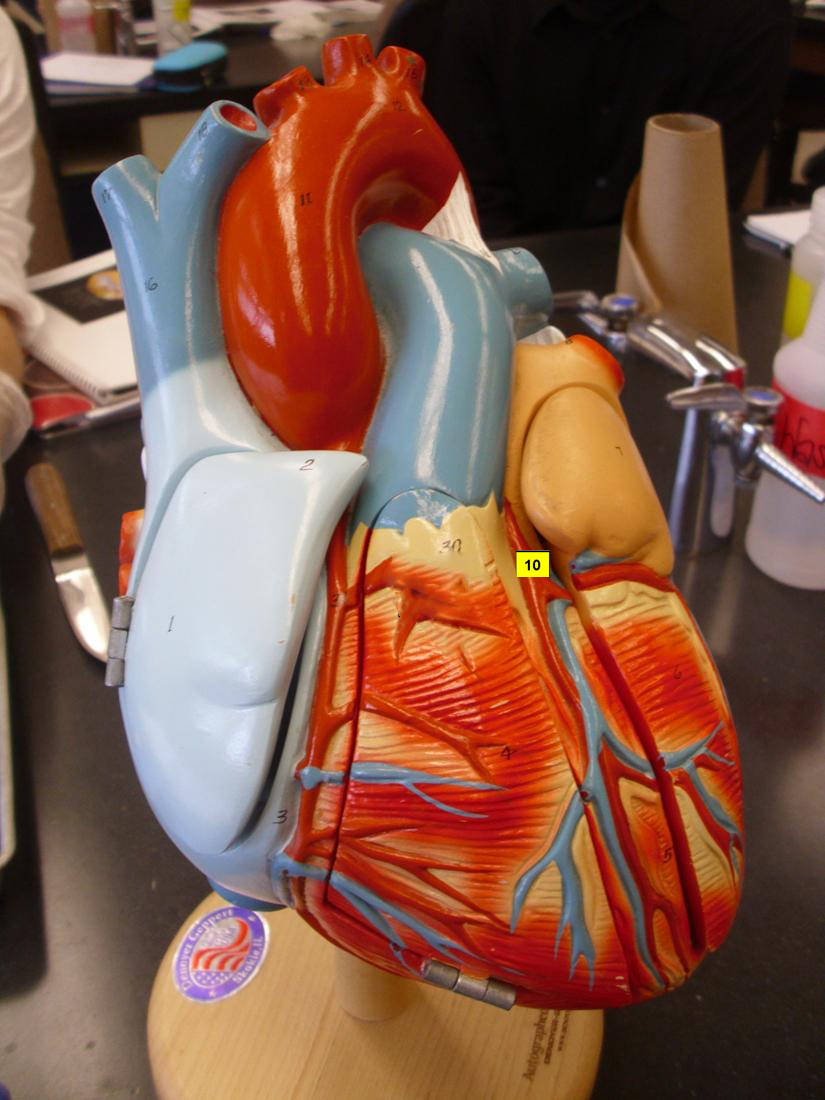
.jpg)
.jpg)
.jpg)
.jpg)
.jpg)
.jpg)
.jpg)
.jpg)
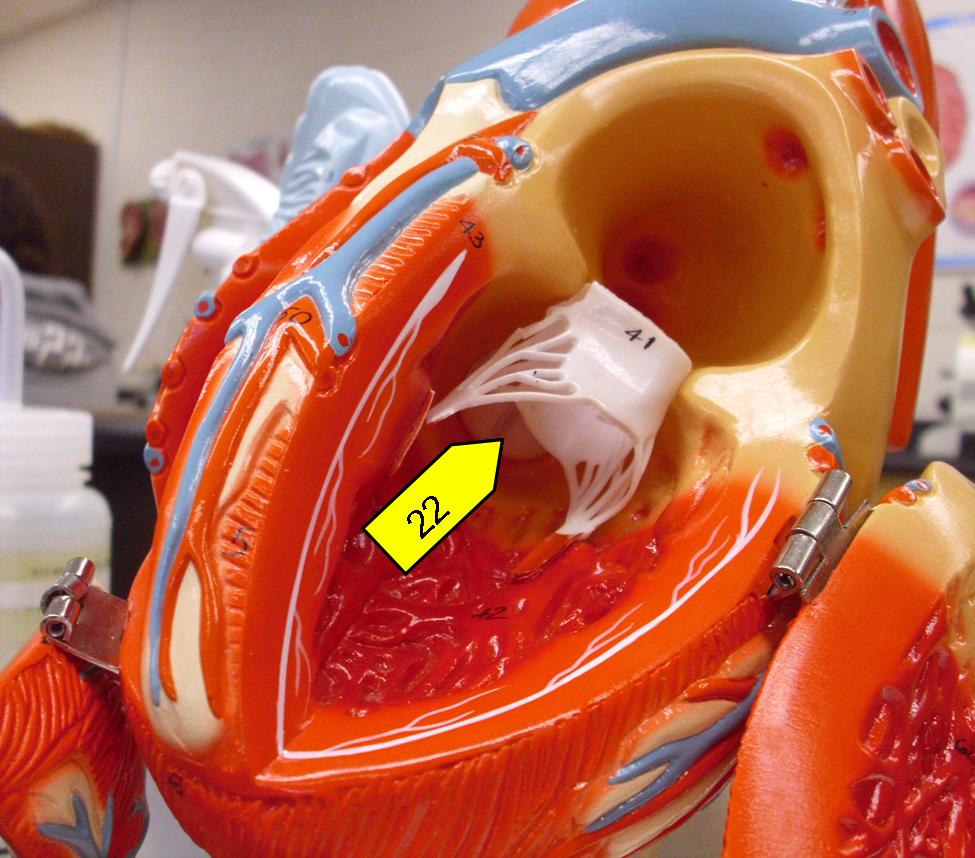
.jpg)
.jpg)
.jpg)
.jpg)

.jpg)
.jpg)

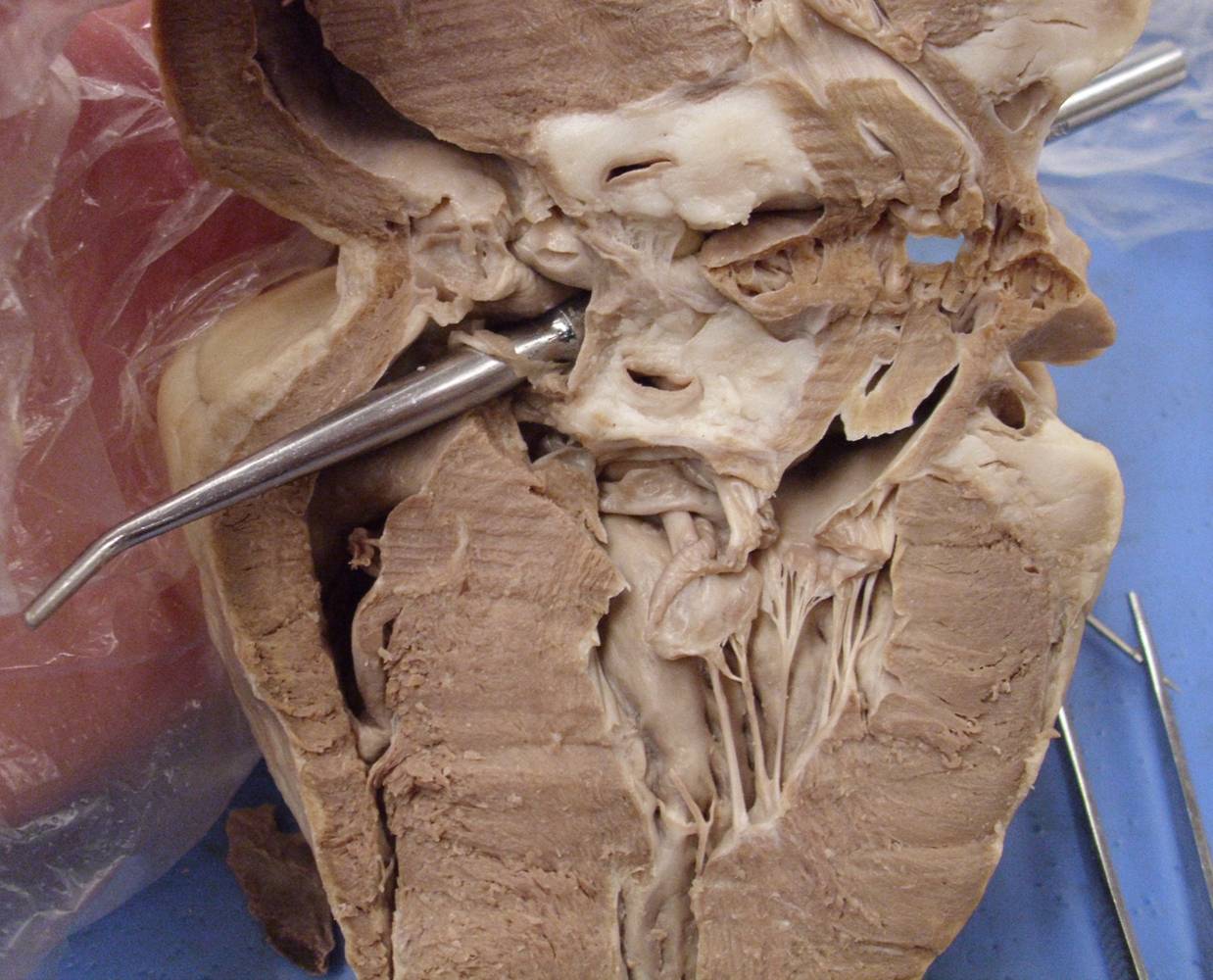




.jpg)
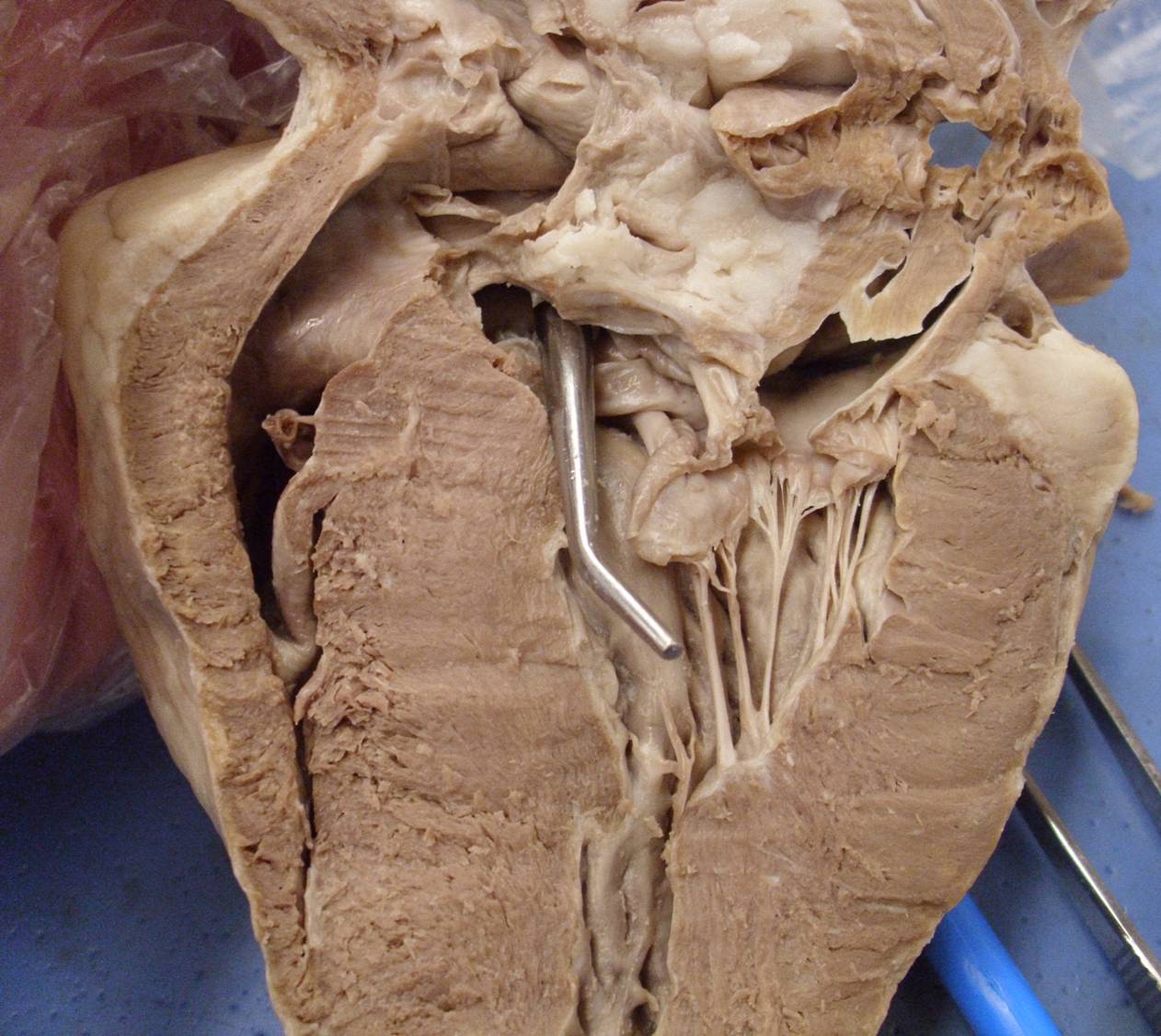
.jpg)
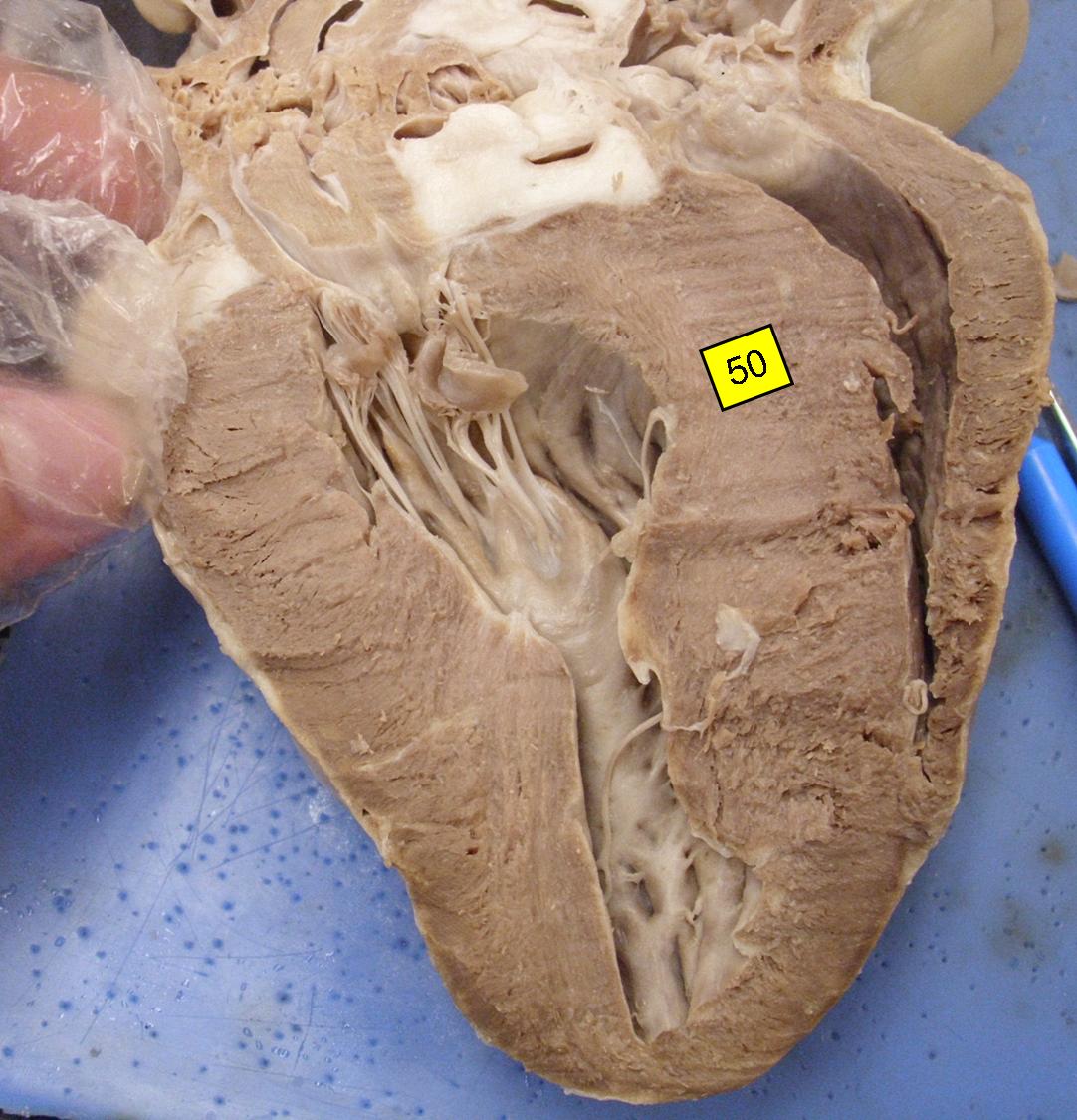
.jpg)
